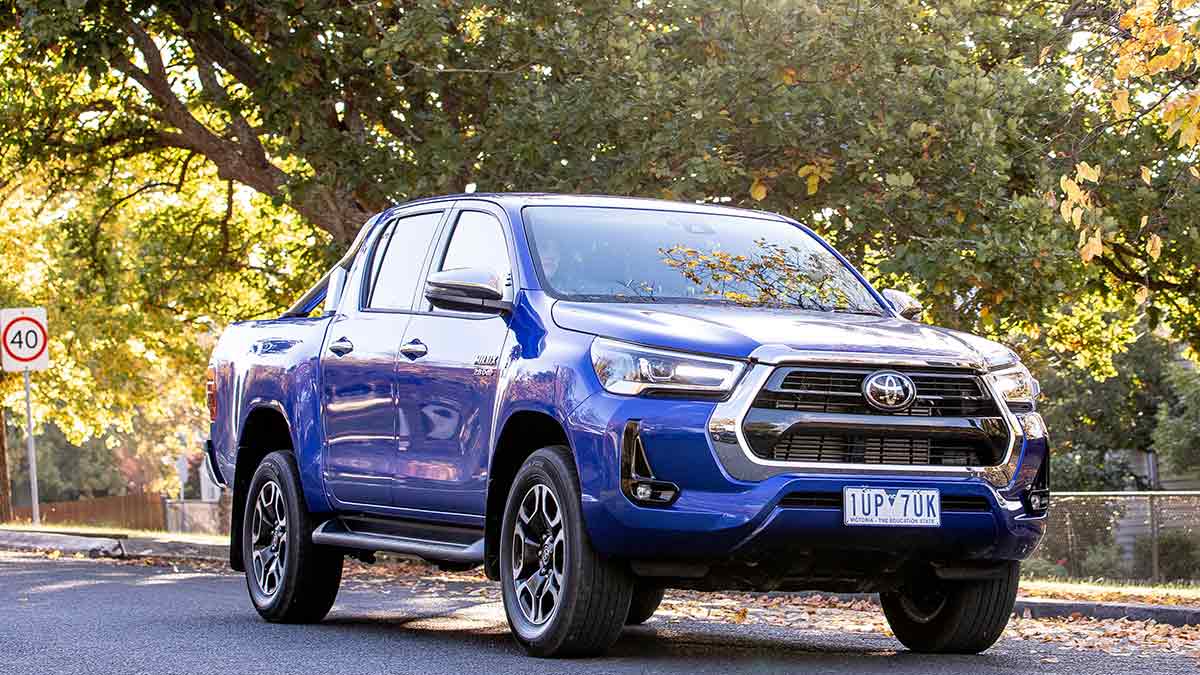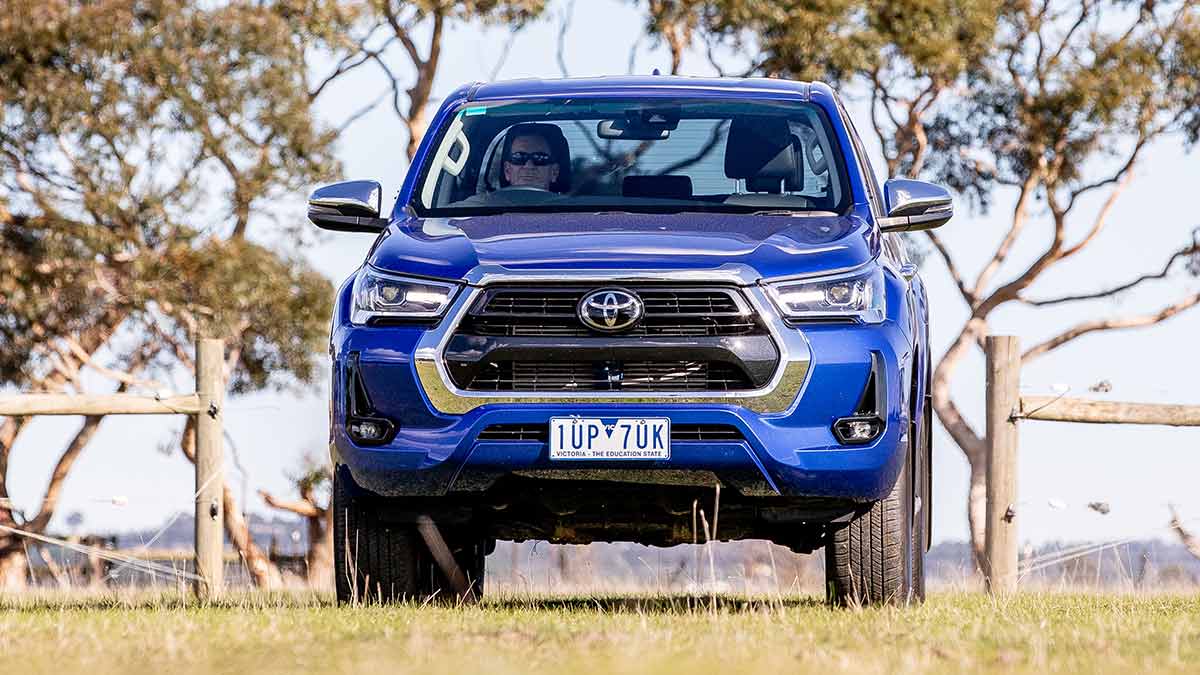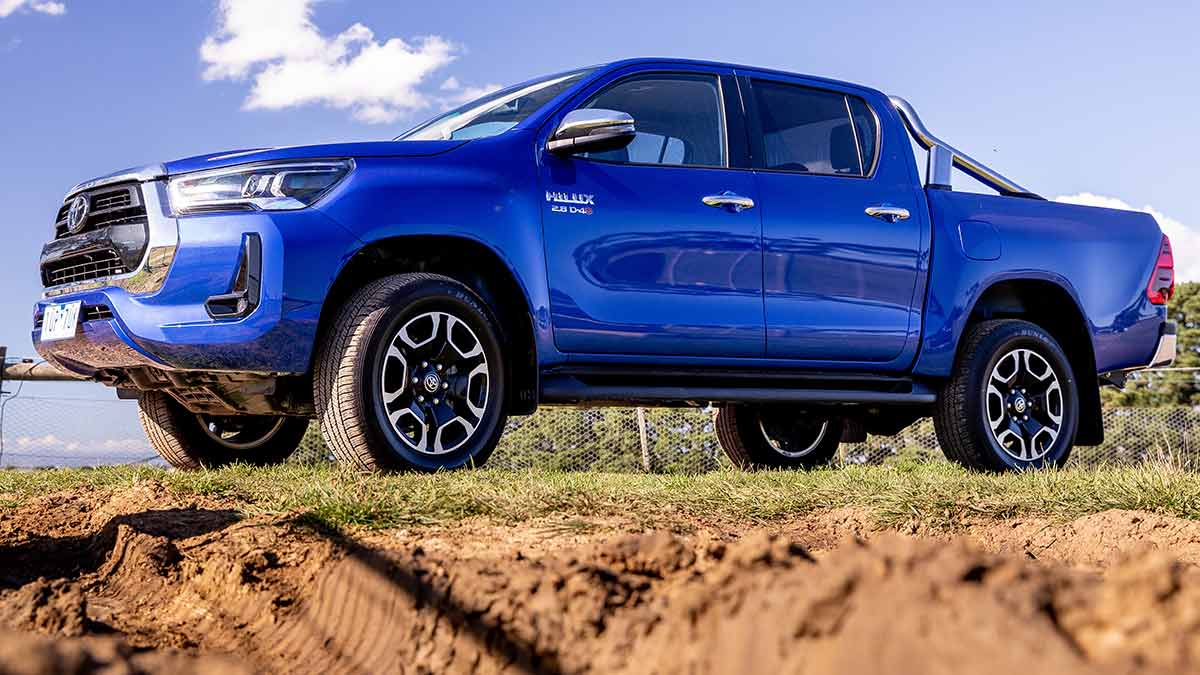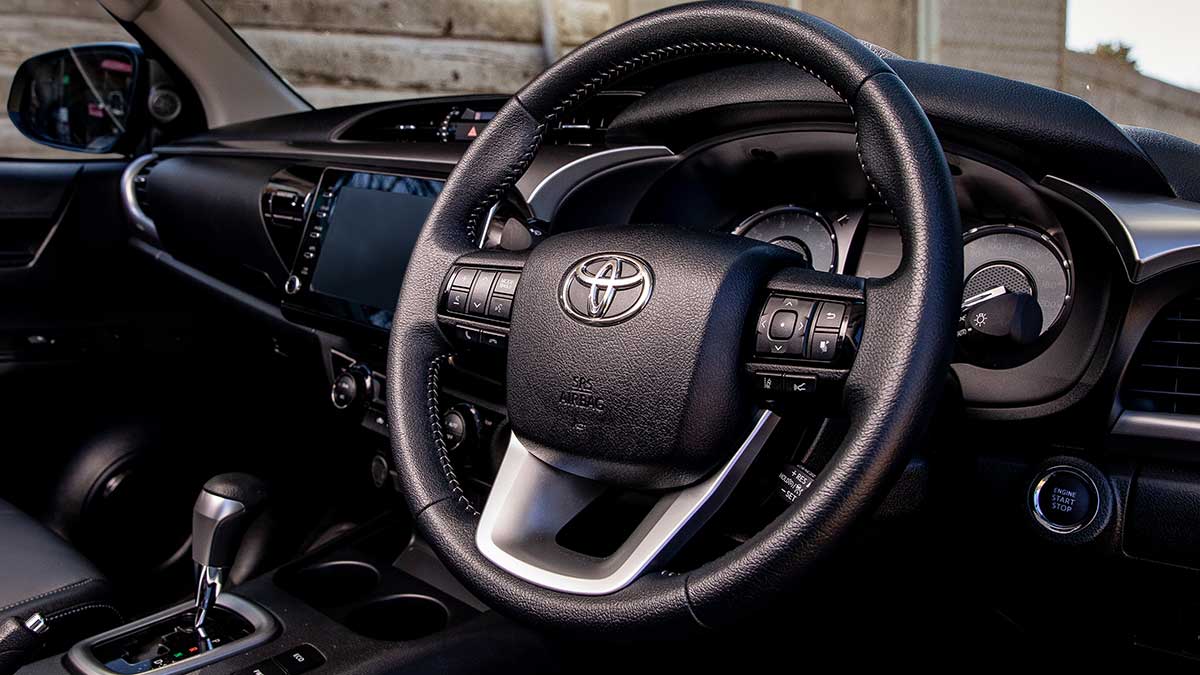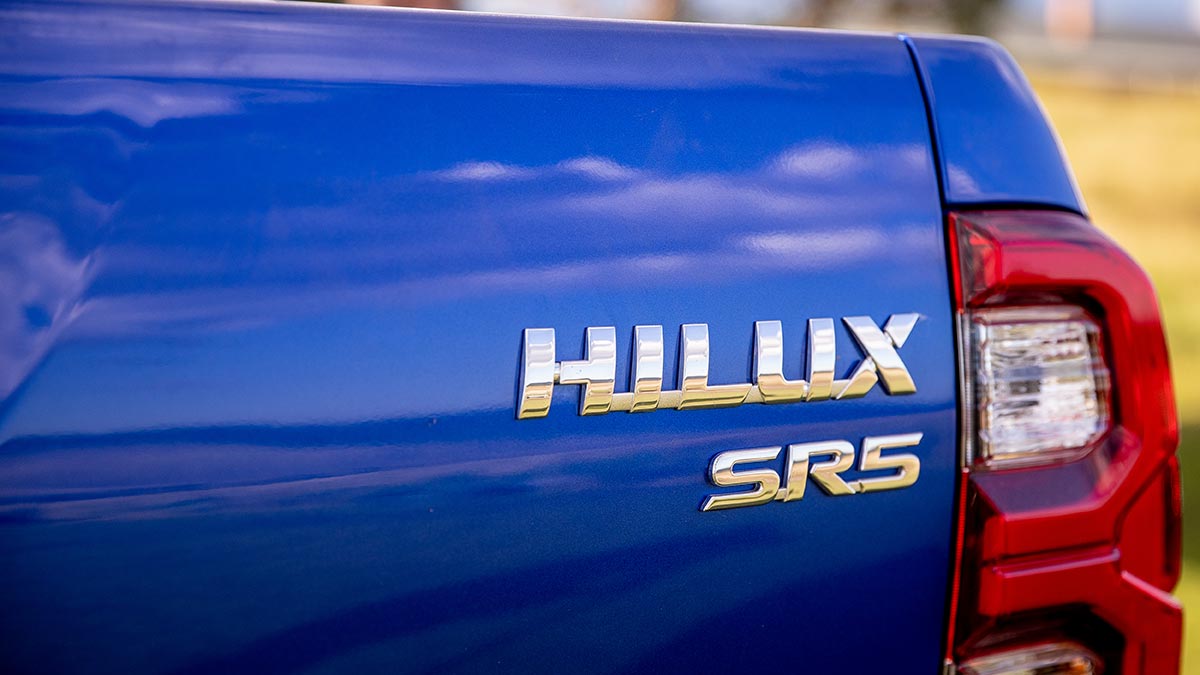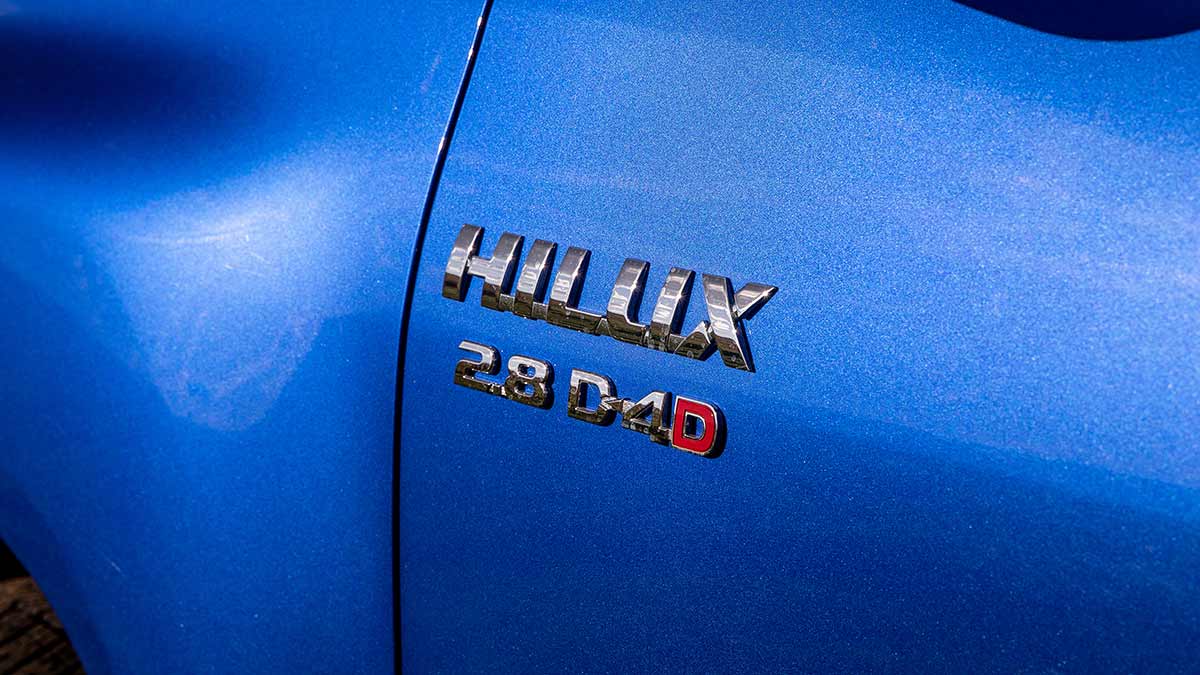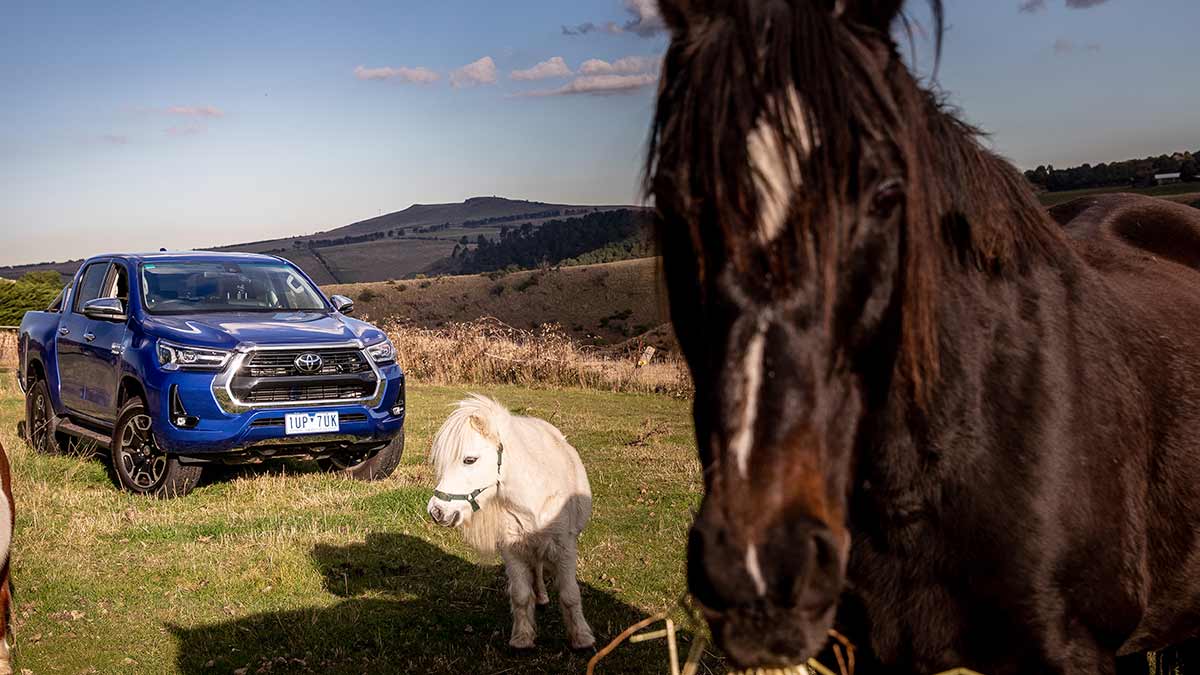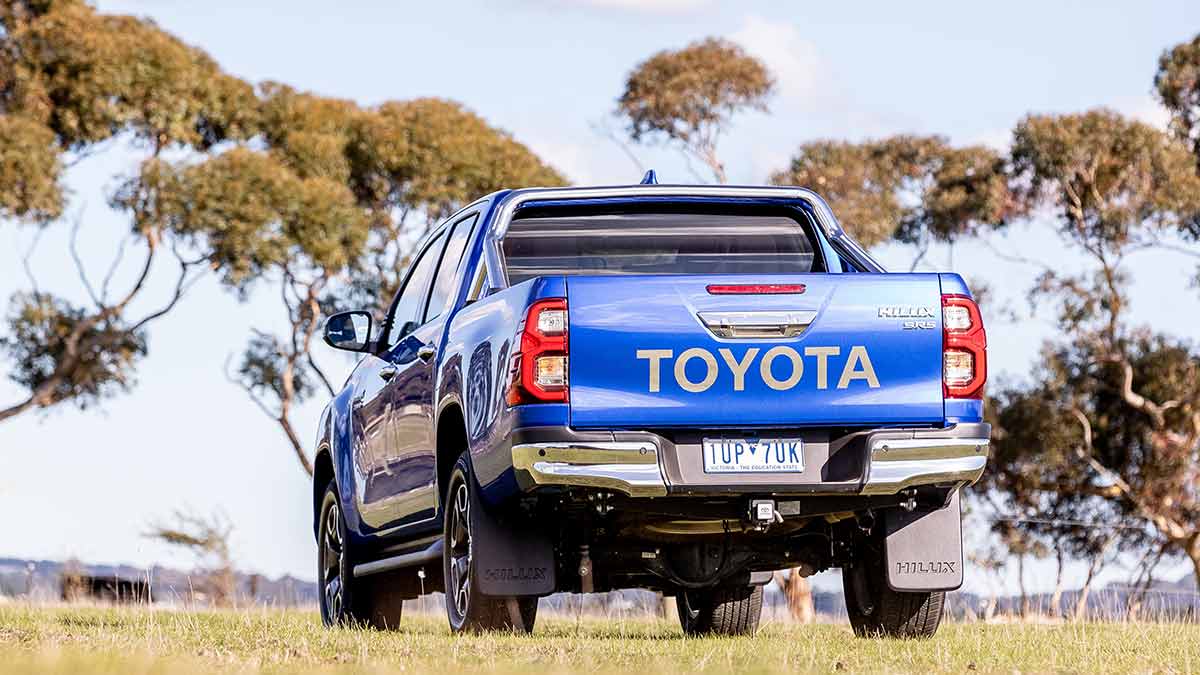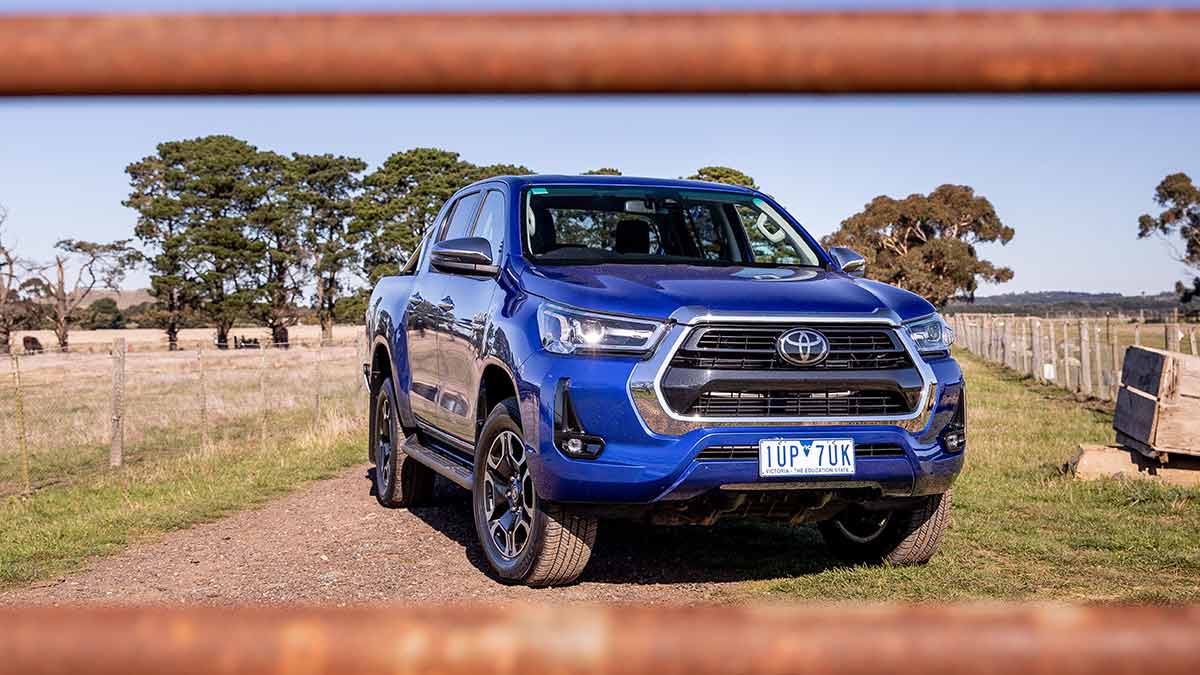The ninth-generation Toyota HiLux has arrived, bringing with it a futuristic forward exterior design, more safety and tech and the same rugged capability owners love. Will the updates tempt private buyers away from the Ford Ranger or are they just enough to keep fleets onside?
Australia's top dog: 2022 Toyota HiLux road test review

The Toyota HiLux has reigned supreme in the Australian automotive landscape for the past six years. That mantle is about to be challenged.
When you’ve reached the pinnacle, there’s only one direction to go. That’s the issue Toyota is about to face with its workhorse favourite, the HiLux. This rig has consistently been the best-selling ute and vehicle in the country for so long its position at the top of the annual table seemed insurmountable.
But the sales and marketing teams in the Toyota head office are going to have to pull off a miracle to keep the HiLux ahead of the soon-to-launch Ford Ranger.
The Ranger will land with the advantage of a new look, improved technology and a greater focus on interior amenities. Given the current Ford occasionally topped the HiLux in monthly sales, the new ute is going to mount the most concerted challenge yet to usurp the HiLux. Expect Toyota to respond.
On this page
- How much does the Toyota HiLux SR5 cost?
- Is the Toyota HiLux safe?
- What's the Toyota HiLux SR5 like inside?
- What's under the Toyota HiLux SR5's bonnet?
- Is the Toyota HiLux SR5 efficient?
- How does the Toyota HiLux SR5 drive?
- Should I buy one?
How much does the Toyota HiLux cost?
The HiLux comes in more flavours than ice cream, extending from two-door, two-wheel drives with a tray for business use to the four-door, four-wheel-drives with a tub beloved by families.
The SR5 dual-cab is where the private buying action picks up. There is a “workmate” version that’s around $10,000 cheaper, but no self-respecting partner wants to be seen driving the “workmate” on a shopping run with the kids.
The four-door utes may have stated life out as utilitarian vehicles but they’re now all about image and badge credibility, which is why factory and aftermarket accessories are such a huge component of this segment.
A list price of $58,650 for the SR5 with a diesel engine and manual gearbox equates into an on-the-road cost of just over $63,000 for buyers in Melbourne. Of course you’re going to option the automatic, which adds $2,000. Any paint colour other than white costs $675 and there’s also a “premium interior” upgrade with partial leather seats, heated front seats and an electrically powered driver’s seat for $2,500.
Tick all the above boxes and the driveaway deal will be just over $68,000, according to the Toyota Australia website (there’s a few hundred dollars difference between regional and metro Victoria).
At the top of the HiLux family tree are the accessorized Rogue and Rugged X versions, priced at $70,200 and $70,750 respectively.
Service intervals for the HiLux are six months or 10,000km and the first six visits are capped at $260 a trip.
The next two years, taking the Toyota out to the end of its warranty, aren’t as cheap, with prices hitting $320 at 70,000km, $723 at the 80K mark, $501 for the 90,000km service and $412 for the five year/100,000km check-up.
For comparison, the new Ford Ranger’s double-cab line-up will start with the XLT variant at $61,190 for the 2.0-litre four-cylinder twin-turbo diesel engine, rising to $67,190 for the Wildtrack. Specifying the 3.0-litre six-cylinder turbodiesel engine adds $3000.
Budget ute buyers can have a dual-cab SsangYong Musso for $34,990 driveaway or an LDV T60 Max Pro for $35,779 on the road.
Is the Toyota HiLux safe?
Five-star ANCAP scores are part of the Toyota marketing hype and the HiLux doesn’t deviate from that formula.
The ute was assessed in 2019 and posted impressive marks across the four testing criteria.
Adult occupant protection was rated at 96 per cent; child occupant protection scored 87 per cent; the HiLux posted an 88 per cent score in protecting vulnerable road users and the safety assist software assessment was 78 per cent.
Seven airbags and standard, along with autonomous emergency braking, lane-keep assist, traffic sign recognition and adaptive cruise control.
What’s the Toyota HiLux SR5 like inside?
It’s not quite a mid-life crisis, but the plastics are starting to date on the SR5. They’ve already been given a facelift courtesy of an upgrade in 2020 but, even allowing for the utilitarian nature of these machines, they aren’t class-leading, though they do look and feel durable.
Toyota has made the most of what it’s got. The 4.2-inch digital driver’s display includes a (must-have) digital speedo and the 8.0-inch infotainment screen includes smartphone connectivity.
The graphics are far from state-of-the-art, but the actual set-up is well-conceived. Set the sat-nav and the HiLux will advise which lane you need to be in when exiting a freeway. It’s not rocket science, but it is appreciated when negotiating roads that drivers may not be familiar with.
Storage space is good and there’s a 220-volt three-pin plug in the centre console bin, along with a pair of 12-volt ports.
USB-C ports aren’t going to be found in a car of this vintage (it first rolled off the production line in 2015), but there is a single USB port up front to power your phone.
Storage in the doors in good and there's enough stowage areas to store the clutter most tradies and families accumulate.
What’s under the Toyota HiLux SR5’s bonnet?
The go-to choice in this segment is a turbodiesel and Toyota has a 2.8-litre four-cylinder engine. It is far from the most powerful or refined in the class but the outputs of 150Nm/500Nm get the job done. Remember that if you buy a manual-gearbox version, torque is limited to 420Nm.
It is hard to fault the company for the engine when this vehicle first launched in 2015. Yes, the Ranger’s twin-turbo diesel and the V6 turbodiesel found in the Volkswagen Amarok are more impressive, but they’re also newer additions.
Towing capacity runs up to 3500kg braked. If you tow that figure in the SR5, there’s not much scope for payload beyond the driver.
The minimum kerb weight is 2100kg. The gross vehicle mass is 3050kg, meaning there’s around 950kg of available payload, without a caravan, boat or horse float.
The gross combined mass is 5850kg and that’s the weight of the ute plus the tow vehicle. Allowing for a 10 per cent weight on the tow ball, a 3500kg tow vehicle is going to push the scales close to the GVM before the driver steps aboard … and then there’s the extra mass of a bullbar, winch etc. to factor in
Then again, how many people will tow a massive caravan with a 4WD ute when they have the option (assuming they’re Toyota people) of the Prado or LandCruiser? I know which one I’d be hitching my wagon to. It’s also worth noting the HiLux isn’t the only ute where the claimed tow capacity doesn’t allow much room for anything else.
Is the Toyota HiLux SR5 efficient?
Toyota states a claimed combined fuel use of 7.9 litres/100km for the SR5. We saw 9 litres on the nose, which is still not bad. Expect to see that figure to creep into the double digits around town.
That's on a par with competitors and the six-speed auto is smart enough to shift gears on light throttle to minimise consumption, while holding on to lower cogs when it's under the pump.
How does the Toyota Hilux SR5 drive?
Leaf rear springs are the price ute buyers pay for the versatility of carrying heavy cargo and people.
They’re tough and cope well with being loaded up for extended drives. The flip of that is they tend to bounce around when there isn’t any weight in the back. The HiLux is guilty of this trait, more so than a Ford Ranger or VW Amarok, meaning occupants will bounce around on anything but a billiard-smooth surface.
Throwing a load in the tub suppresses that tendency.
Braking performance is first rate for a four-wheel-drive ute and the steering is equally impressive, with the driver aware of what the front wheels are doing on the bitumen or wading through mud.
Switching into four-wheel-drive high or low range is a straightforward procedure and the HiLux revels in playing in the bush, where the traction control’s setting is still benchmark good. You can momentarily feel a wheel slip before the Toyota transfer torque and the ute moves on with no loss of momentum.
Throw a canopy over the tub if you want added security and insulation, should you choose to sleep in the back of the bus on overnight fishing trips.
Should I buy one?
As a fit-for-purpose machine the HiLux is hard to argue with for its all-round competence. There are rivals with better on-road manners, though, so consider how you’re going to use the ute. If it’s a city show pony, look elsewhere; as a genuine workhorse have a good long look, even if it is getting long in the tooth.
If regular camping trips or forays through the bush are part of the agenda, the HiLux is right up there. You may want to wait until the new Ranger arrives, though: it will be worth a test-drive and Toyota will likely look to respond with more features, price cuts, or both.
The information provided is general advice only. Before making any decisions please consider your own circumstances and the Product Disclosure Statement and Target Market Determinations. For copies, visit racv.com.au. As distributor, RACV Insurance Services Pty Ltd AFS Licence No. 230039 receives commission for each policy sold or renewed. Product(s) issued by Insurance Manufacturers of Australia ABN 93 004 208 084 AFS Licence No. 227678.
